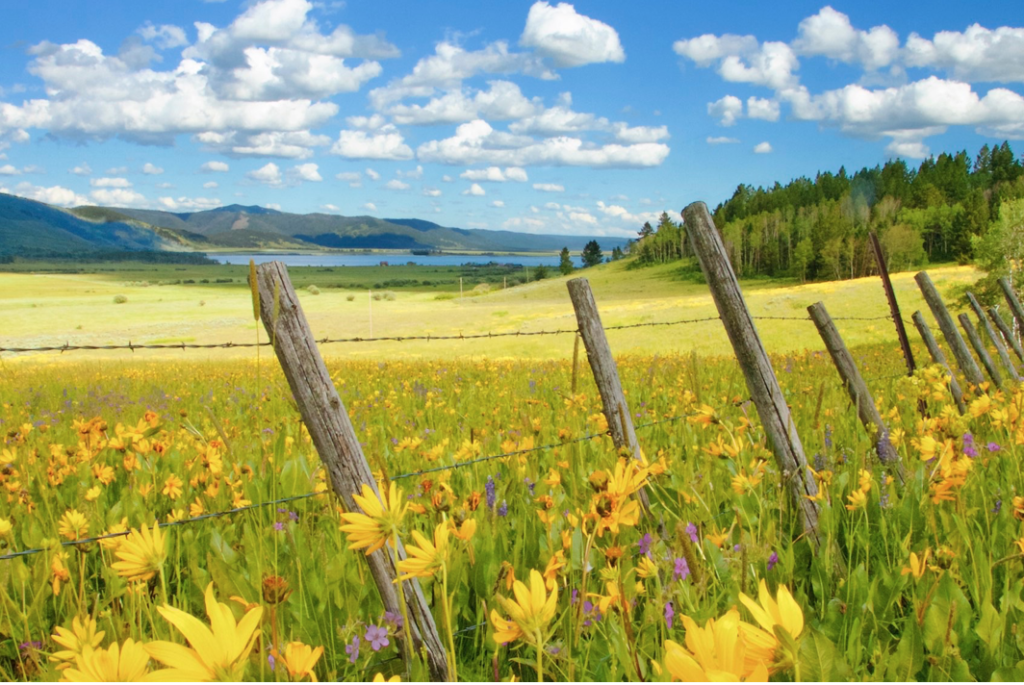by Jean Bjerke
People love Island Park for many reasons. Its natural beauty, mountains, valleys, lakes, and streams. Its abundant wildlife and birds, and its world-class fishing. Its lush meadows, forests, and wildflowers. The opportunity to be surprised by elk, moose, pronghorn, deer, and other wildlife almost any time. All of these qualities make it a year-round destination for outdoor recreation.

Imagine if the entire landscape were covered with commercial development, homes, businesses, hotels, roads, and parking – i.e. a city. Would you want to come here?
That’s why I appreciate the numerous landowners over the years who have protected their land from development through a conservation easement.
According to The Nature Conservancy, “Conservation easements are permanent legal agreements that protect important habitat from development while ensuring that traditional ownership and land uses like ranching continue.”
For example, the image that accompanies this article is not just a pretty picture. This land is protected from development by a conservation easement.
The conservation values of the land in this picture were carefully documented before the easement was arranged. Trout come up the stream from Henrys Lake to spawn. This land is used by elk, moose, pronghorn, deer, bears, wolverines, and other wildlife. It has a key position on two major wildlife migration routes – the north-south migration route for about 300 pronghorn of the Madison Valley herd as they move seasonally in and out of Island Park, and the east-west migration corridor for grizzly and black bears, mountain lions, wolves and wolverines who move between Greater Yellowstone and the Centennial Mountains.
What a gift to future generations that this important land will be preserved forever from human interference.
